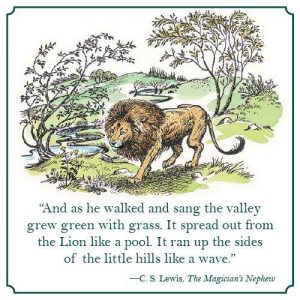It’s Monday of Doctor Strange week here at Nerds on Earth, and also… Wait, what was it…? Oh yeah, HALLOWEEN, baby! It’s the day when we love to be scared, love to think about ghosts and goblins, but especially witches and wizards. So on this spookiest and most mystical of days, we thought it’d be fun to examine how magic works in different intellectual properties we love.
How Magic Works in Harry Potter
First up is the wonderful wizarding world of Harry Potter, et al. In this world, magic is mystical, with no real reason given for how or why it works. It is generally hereditary, with non-magical children (Squibs) of witches and wizards the least common inhabitants of the magical world. There are, however, a fairly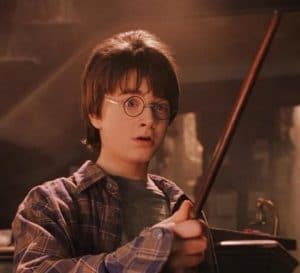 significant number of Muggle-borns who find themselves with an invitation to Hogwarts or similar schools. No reason is ever given for this, or for why one sibling might have powers (Lily Potter) while the other is completely ordinary (Petunia Dursley).
significant number of Muggle-borns who find themselves with an invitation to Hogwarts or similar schools. No reason is ever given for this, or for why one sibling might have powers (Lily Potter) while the other is completely ordinary (Petunia Dursley).
In general, performing magic in the Harry Potter world requires a magic wand and the proper words of a spell, though older students are taught how to perform spells non-verbally in order to hide their intentions from their enemies.
There are also other creatures in the Harry Potter world who possess magic, most notably Goblins and Elves. (It goes without saying that J.K. Rowling’s elves are nothing at all like J.R.R. Tolkien’s elves, but I’ll say it anyways…) These creatures possess a form of magic that seems more primal and raw, but also in many cases more powerful, than the wizarding world’s learned spells, wand-waving, potions, or charms. As a result, both Goblins and Elves seem to be viewed with a fair amount of caution and possibly even suspicion by human wizards.
How Magic Works in Middle Earth
J.R.R. Tolkien took a much more holistic view of magic in his Middle Earth works. It’s pervasive – nearly everyone can do magic of one sort or another. The most obvious practitioners are the Istari, the Wizards. They enter into the story in the Third Age and seem to already possess some skills and magical abilities, although they do (at least the ones who we hear about in the story) study to learn even more.
The things they study give a view into the different arenas where Tolkien envisioned magic, too.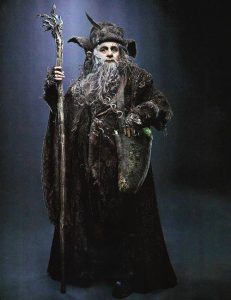 Saruman becomes fascinated with rings and other artifacts of power, things that can dominate and bend others to the user’s will. Gandalf focuses on fire, light, healing, and other things that can benefit not just the practitioner, but also the target. Radagast studied animals and the natural world, gaining the ability to communicate with animals.
Saruman becomes fascinated with rings and other artifacts of power, things that can dominate and bend others to the user’s will. Gandalf focuses on fire, light, healing, and other things that can benefit not just the practitioner, but also the target. Radagast studied animals and the natural world, gaining the ability to communicate with animals.
The idea that there is magic in nearly everything in Middle Earth traces its origins back to the very creation of the world in Tolkien’s mythology, and ultimately his Christian faith. In The Silmarillion the world is created when Illuvatar (Tolkien’s analog for God) gives the Valar (Tolkien’s analog for arch-angels) music to sing. They are each given specific parts to sing according to their nature. These parts end up being the realm or particular specialty that they occupy in Middle Earth. Manwe is lord of the air; Ulmo, the seas; Aule, the ground itself; Orome, the forests; Mandos, the dead; etc. Within each of these realms magic exists, and those who are in tune with it can use and manipulate it.
Thus, in Lord of the Rings Ents can shepherd trees, Frodo can see the Ringwraiths in the unseen world when he wears the Ring, Gandalf can use spells to summon fire and/or light, Galadriel can capture the light from Earendil’s Star (a Silmaril!) in a phial and give it to Frodo, Saruman’s voice can enchant those who hear it, and on and on.
What is truly interesting to me about magic in Tolkien’s universe is how its pervasiveness leads to it not being recognized as magic by those who practice it. Most famously, Galadriel asks Sam in Lothlorien, “And you? …For this is what you folk would call magic, I believe; though I do not understand clearly what they mean; and they seem to use the same word for the deceits of the Enemy.”
How Magic Works in Narnia
C.S. Lewis’ land of Narnia is, like Tolkien’s Middle Earth, absolutely filled with a huge variety of magic. Lewis, also like Tolkien, was a Christian, which makes his use of magic in Narnia even more curious. In Narnia, there are essentially three main streams of magic:
- Bad magic, most closely associated with the White Witch and her concern for power;
- Good magic, which is much more akin to spiritual forces and is embodied by the Jesus figure of Aslan;
- and (and this is the interesting part to me) a middle-ground of magical creatures and nature magic that is basically morally neutral.
![aslan singing creation magic]()
Like Middle Earth, the magic is pervasive to the point of simply being a curiosity in many cases. No one thinks twice about walking into a forest clearing filled with dancing satyrs, wood nymphs, and persistent globes of fire lighting the whole affair. It’s not a matter of debate, or even of particular awe, that a lion created the entire world of Narnia in the presence of a group of humans by singing it into existence.
What sets Narnia apart from Middle Earth is the sense that there is magic, and then there’s MAGIC. In The Lion, The Witch, and the Wardrobe Lewis taps into this most deeply with the events surrounding Aslan’s death. The White Witch rightly remembers the “deep magic from the dawn of time” that says that the blood of a traitor must be shed, and belongs to her. (She was one of the group who witnessed the creation of Narnia…) She was, however, unaware of the “deeper magic from before the dawn of time” that dictated that if Aslan gave himself up in the traitor’s place, that he would be resurrected after his death. It’s a very Christian theme. Which makes all of the fawns, satyrs, nymphs, and spirits that much more confusing, since they are all very pagan in origin.
The “deep magic v. deeper magic” conversation also leads to a strong sense in Narnia that the physical world is basically just a storefront for the spiritual world, which is the real world. One of my all-time favorite lines from any book ever deals with this idea, from The Voyage of the Dawn Treader. The character Eustace encounters a being who says that he is a star.
“In our world” said Eustace, “a star is a huge ball of flaming gas.”
“Even in your world, my son, that is not what a star is, but only what it is made of.”
How Magic Works in Doctor Strange
Surgeon-turned-Sorcerer Supreme Stephen Vincent Strange protects the earth against magical and mystical threats. His abilities come from his training at the hands of the Ancient One. This training allows him to tap into the energies of various cosmic and mystical beings, who lend him their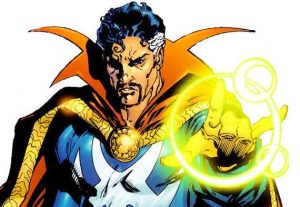 energies for spells. These spells have very complicated and strange-sounding (see what I did there?) names in the comics, and allow him to do things like summon shields and weapons, create portals to other places, and in some cases warp the very fabric of reality around him.
energies for spells. These spells have very complicated and strange-sounding (see what I did there?) names in the comics, and allow him to do things like summon shields and weapons, create portals to other places, and in some cases warp the very fabric of reality around him.
Magic in the Marvel Universe (the comics, at least… it seems like the movie might delve into some quantum physics) seems to be of the very mysterious, only-a-select-few-can-even-comprehend variety. The Ancient One trains Stephen Strange in how to tap into his own innate mystic powers, as well as those of the world around him, and the entities from other realms. No real explanation is given to any of this, to my knowledge. It serves to keep it mystical and mysterious, which is the whole point, I think. (Here’s more on magic in the Marvel Universe.)
How Magic Works in Eragon
Possibly the most complete and well-thought-out version of magic comes in the Inheritance cycle from author Christopher Paolini. In Paolini’s works, magic is the art of manipulating natural energy through focused thought. As in other magical IPs, its use is reserved for a select few humans who have an innate ability, and for other races/species that are more thoroughly magical. Except for the Dragons, this focused thought happens through use of the Ancient language. Eragon’s mentor, Brom, explains to him that terrible, horrible things can happen if a magic user has a stray thought in the midst of performing a spell. So using magic in the Eragon universe, like other magical universes, involves learning quite a bit of vocabulary.
What sets magic in the Eragon universe apart is the very detailed way that the books describe how it 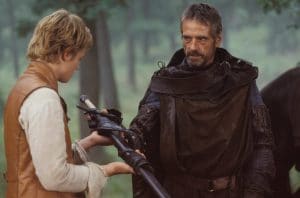 works. In the world of Alagaësia, magic is used to do quickly what would otherwise take a lot of time to do. But the key difference is that it takes the same amount of energy. So, for instance, you can use magic to turn an arrow into a flaming arrow, but it drains energy as if you had worked to light the fire yourself and then lit the arrowhead yourself. You can also use magic to lift a 10-ton boulder and fling it across a battlefield at an enemy, but it will consume more energy than you possess and you’ll die.
works. In the world of Alagaësia, magic is used to do quickly what would otherwise take a lot of time to do. But the key difference is that it takes the same amount of energy. So, for instance, you can use magic to turn an arrow into a flaming arrow, but it drains energy as if you had worked to light the fire yourself and then lit the arrowhead yourself. You can also use magic to lift a 10-ton boulder and fling it across a battlefield at an enemy, but it will consume more energy than you possess and you’ll die.
To get around this limitation, magic users can use spells to store up energy from themselves and the world around them into gemstones, usually embedded into a sword hilt, breastplate, etc. If they are diligent and plan ahead, magic users can enter into battle with massive stores of energy that can be used to unleash all kinds of offensive and defensive magic on their foes, or to create beautiful and useful things when not in battle.
It’s this magical conservation-of-energy principle that really sets Paolini’s world apart. While there are instances in other IPs of magic use leading to exhaustion, the Inheritance cycle is the only one that directly ties magic use to a person’s life energy. I love it, because it raises the stakes and adds a dimension of thoughtfulness that other worlds don’t have. For instance, Brom teaches Eragon that he can kill someone by levitating a pebble and causing it to fly through their brain (which would probably kill him, because how hard would you have to throw a stone to have it go through someone’s head?!), or he could use magic to sever a blood vessel in their brain (which takes a comparatively tiny amount of energy). Successful and impactful magic use in Alagaësia is a thinking-person’s game.
Even though there are some pretty major differences in how magic works and is treated in these different IPs, there are some very broad similarities, too.
- Magic is always something that ordinary people don’t have access to, but only the select few.
- It’s always fairly mystical, and not usually fully understood even by those who practice it.
- And, with few exceptions, it requires some sort of instrument or apparatus (wand, staff, sword, etc.), which may itself be magical, or might simply be a conduit or antenna of sorts.
What are some of your favorite magical worlds and/or treatments of magic in books, movies, or television?
Like us on Facebook to follow along with more content from Nerds of Earth.
[ninja-inline id=10231]


